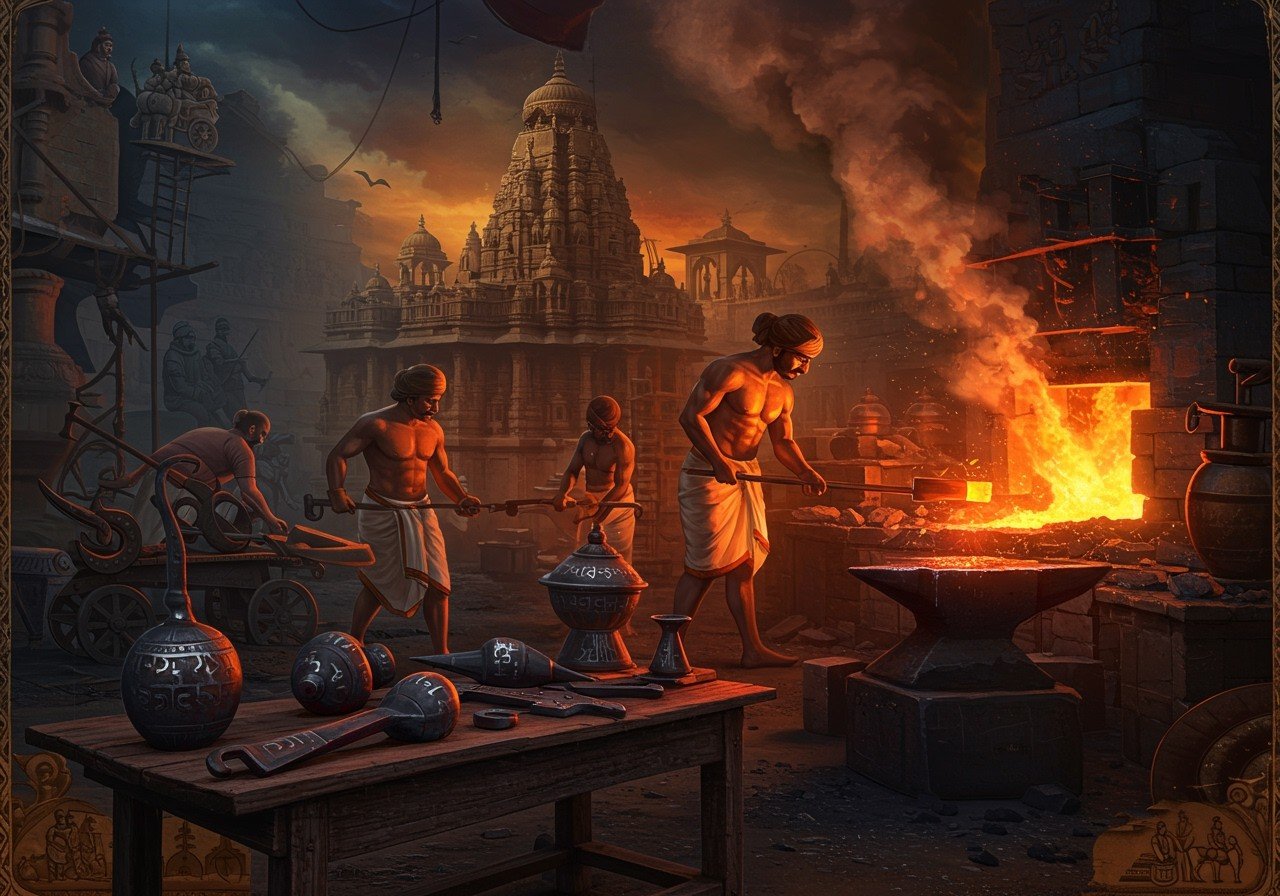
India’s Iron Age represents a pivotal era of transformation and cultural development. Spanning centuries, this period witnessed the emergence of advanced metalworking techniques, the rise of urbanization, and the development of new social and political structures. This blog post explores the key aspects of India’s Iron Age, offering insights into its origins, defining characteristics, and enduring legacy.
What Defined India’s Iron Age?
The Iron Age in India is characterized by the widespread adoption of iron for crafting tools, weapons, and various artifacts. This era succeeded the Chalcolithic Age and brought about remarkable technological progress. The shift from copper and stone to iron dramatically reshaped daily life. Iron tools revolutionized agriculture, making farming practices more efficient. They also empowered warfare with stronger weapons and fostered intricate craftsmanship.
This period also saw the development of new belief systems and rituals. Interestingly, different regions of India experienced the Iron Age in unique ways. The Gangetic plains, Deccan Plateau, and Southern India each exhibited distinct variations in their adoption and utilization of iron technology.
Dating the Dawn of Iron in India
Recent archaeological discoveries have shed new light on the timeline of India’s Iron Age. Findings in South India, notably in Mayiladumparai, suggest that the Iron Age might have commenced as early as 2172 BCE, potentially making it the oldest in the region. Other early Iron Age sites, such as Hallur in Karnataka, further corroborate the early adoption of iron technology. These discoveries challenge previous understandings and highlight the significance of ongoing research.
In North India, the Iron Age is associated with specific pottery styles like Painted Grey Ware and Northern Black Polished Ware, typically dated between 800 and 400 BCE. Evidence from Tamil Nadu indicates an even earlier start to the Iron Age, possibly around 3345 BCE. The emergence of powerful kingdoms like Magadha during this era significantly shaped India’s historical trajectory.
Key Features of India’s Iron Age
Several distinctive features mark India’s Iron Age:
- Metallurgical Advancements: New techniques for smelting and forging iron emerged, leading to the creation of more durable and sophisticated tools and weapons. This spurred innovation in various crafts and industries.
- Agricultural Revolution: The introduction of iron plows significantly enhanced farming practices, leading to increased crop yields and supporting a growing population. This surplus facilitated the development of more complex societies.
- Military Innovations: Iron swords, spears, and arrowheads transformed warfare, giving rise to new military strategies and tactics. This impacted the balance of power between different groups and kingdoms.
- Urbanization and Trade: The increased production of iron goods fueled the growth of urban centers and expanded trade networks. This facilitated the exchange of ideas, goods, and cultural practices across different regions.
- Social and Political Changes: Society and politics became more complex with the formation of kingdoms and early states. This era laid the foundation for the development of more structured governance systems.
- Artistic Flourishing: The Iron Age witnessed remarkable artistic achievements in pottery, jewelry, and architecture. The availability of iron tools allowed for greater precision and detail in artistic expression.
- Environmental Impact: The increased demand for iron led to deforestation and changes in land use. This highlights the complex interplay between technological advancements and their environmental consequences.
The Enduring Legacy
The legacy of India’s Iron Age continues to resonate in Indian society today.
- Influence on Later Periods: Technologies and innovations from the Iron Age profoundly impacted subsequent historical periods, including the Maurya and Gupta empires. The foundations laid during this era shaped the course of Indian history.
- Living Traditions: Ironworking traditions persist in various regions of India, demonstrating the enduring skills and knowledge passed down through generations. These traditions represent a tangible link to the past.
- Cultural Impact: Iron Age developments significantly influenced Indian art, literature, and religious practices. The use of iron in rituals and ceremonies reflects its enduring cultural significance.
- Historical Understanding: Preserved artifacts from the Iron Age provide valuable insights into ancient Indian history and culture. These artifacts offer a glimpse into the lives and practices of past societies.
- Ongoing Research: Modern archaeological research and heritage conservation efforts continue to focus on the Iron Age, deepening our understanding of this transformative period. New discoveries continue to reshape our understanding of India’s past.
Poojn.in: Connecting You to India’s Ritual Heritage
Poojn.in, India’s leading provider of cultural and religious goods, offers a wide selection of products that connect you with India’s rich traditions. Explore our collection of copper kosh kushi, copper kosha kushi for puja, and brass tir kathi, essential items for various rituals and ceremonies. We are committed to providing authentic and high-quality products that honor India’s cultural heritage.
Conclusion
The Iron Age stands as a period of profound change and advancement in India’s history. From improved metalworking and farming techniques to the rise of complex societies, the innovations of this era left a lasting impact. By exploring and understanding the Iron Age, we gain a deeper appreciation for India’s rich cultural heritage and the enduring legacy of its past.
Explore more about ancient Indian history and traditions on Poojn.in. Discover our extensive collection of ritual items and cultural goods, carefully curated to connect you with India’s vibrant heritage.
Further explore related topics:
- Leaning Temple of Huma: History, Architecture, and Mystery
- Odisha’s Sacred Sites: A Journey Through Spirituality and History


